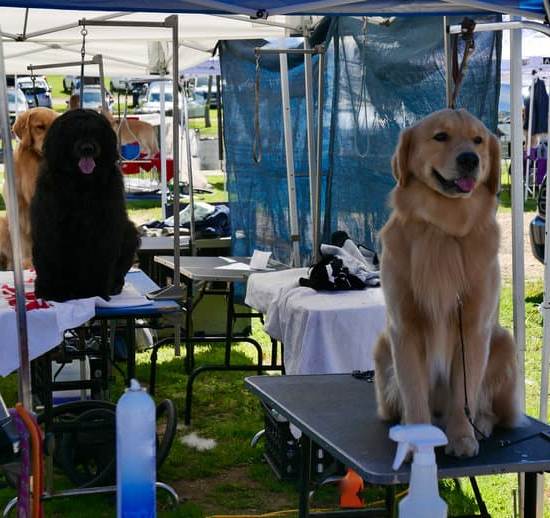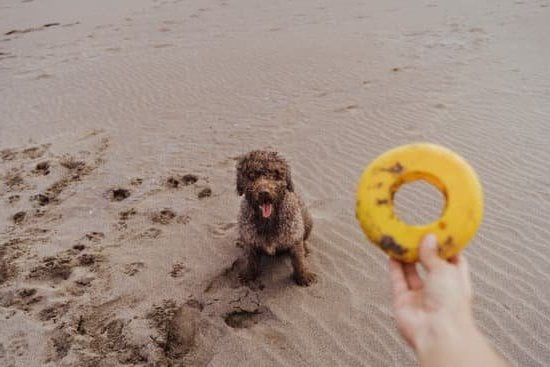Does your dog cower or run away at the sound of a loud noise or when faced with unfamiliar situations? If so, you may be wondering how to train a scared dog to come. Understanding the fear behind your dog’s behavior is crucial in addressing it effectively. Building trust, using positive reinforcement, and consistency are key components in training a scared dog to overcome their fears and respond when called.
Many dogs experience fear for various reasons, such as past trauma, lack of socialization, or genetic predispositions. It’s essential to acknowledge and understand the root cause of your dog’s fear before implementing any training techniques. By doing so, you can tailor your approach to address their specific needs and anxieties.
Building trust is fundamental in helping a scared dog feel safe and secure. Patience and empathy are necessary when establishing a strong bond with your furry companion. Using positive reinforcement methods such as treats, praise, and rewards can encourage your scared dog to come to you despite their fears. Consistent training and routines create an environment of predictability that can help reduce your dog’s anxiety over time. Consistency is vital in providing reassurance and stability for a frightened pet.
Training a scared dog requires patience, empathy, and understanding. It’s important not only to celebrate progress but also to recognize the small victories along the way. Seeking professional help from a dog trainer or behaviorist may also be necessary for severe cases of fear that require specialized attention. With dedication and the right approach, training a scared dog to come can lead to significant improvements in their confidence and well-being.
Building Trust
It’s important to understand that a scared dog may be experiencing fear due to various reasons such as past trauma, lack of socialization, or genetic predisposition. By understanding the root cause of your dog’s fear, you can tailor your approach to training them to come when called.
- Spend quality time with your dog: Engage in activities that your dog enjoys, such as playing fetch or going for walks.
- Be patient and calm: Dogs pick up on human emotions, so it’s essential to remain calm and patient when working with a scared dog.
- Use positive body language: Avoid making sudden movements and maintain open body language to convey trust and reassurance to your dog.
Using positive reinforcement is crucial when training a scared dog to come. This involves rewarding your dog with treats, praise, and affection when they respond to their name or come when called. This will help create a positive association with coming when called and build their confidence over time. Remember to only use rewards that are motivating for your specific dog.
Positive Reinforcement
Using Treats
Using high-value treats can be very effective in motivating a scared dog to come to you. Choose treats that your dog loves and use them as a reward when they respond positively to your commands. Start by offering the treat when your dog takes even a small step towards overcoming their fear, and gradually reduce the frequency of treat-giving as they become more comfortable.
Praise and Rewards
In addition to treats, offering verbal praise and physical rewards such as belly rubs or playtime can further reinforce positive behavior. When your scared dog responds by coming closer to you, shower them with words of encouragement and affectionate gestures. This will help build their confidence and association of coming to you with positive experiences.
Consistency
Consistency is key in using positive reinforcement effectively. Be sure to maintain a consistent approach in rewarding your scared dog for coming to you despite their fears. This will help them understand that overcoming their fear leads to good things, ultimately strengthening the bond between you and your pet.
By consistently using treats, praise, and rewards in training your scared dog to come, you can help them overcome their fears while building a stronger bond with them. Positive reinforcement sets the stage for long-term success in addressing fear-based behaviors in dogs.
Desensitization Techniques
Desensitization is a common technique used to help scared or anxious dogs overcome their fears. This process involves gradually exposing your dog to the things that scare them in a controlled and positive environment.
The goal is to help the dog become less sensitive or fearful of specific triggers over time. It is important to note that desensitization should always be done at a pace that is comfortable for the individual dog, as pushing too fast can actually make their fear worse.
One effective way to start desensitizing your scared dog is by using counterconditioning, which involves pairing the scary stimulus with something positive such as treats or playtime. For example, if your dog is afraid of strangers, you can give them a treat every time a stranger approaches. Over time, they will begin to associate the presence of strangers with something enjoyable rather than something fearful.
It’s crucial to remain patient and consistent when using desensitization techniques with your scared dog. Progress may be slow, but it’s essential to celebrate even small victories along the way. If you’re not making significant progress on your own, don’t hesitate to seek help from a professional dog trainer or behaviorist who can provide guidance and support in desensitizing your scared dog.
| Desensitization Step | Description |
|---|---|
| Counterconditioning | Pairing scary stimulus with something positive like treats. |
| Patience | Remaining patient and consistent during the desensitization process. |
| Professional Help | Guidance and support from a professional trainer or behaviorist if necessary. |
Consistency Is Key
Consistency is crucial when it comes to training a scared dog to come. Dogs, especially those with fear issues, thrive on routine and predictability. Consistent training and routines help your scared dog feel secure, which in turn can make them more receptive to learning and overcoming their fears.
The Importance of Routine
Establishing a consistent daily routine for your scared dog can help reduce anxiety and build trust. From meal times to walks and playtime, having a predictable schedule can provide a sense of security for your pet. This routine should also extend to training sessions, which should take place at the same time each day in the same location.
Repetition and Patience
Consistency also means repeating the training exercises regularly while being patient with your dog’s progress. It’s essential to understand that overcoming fear takes time, so be prepared to dedicate yourself to this process. Repeating the training exercises in a consistent manner will reinforce positive behavior and slowly decrease your dog’s fear response.
Creating a Stable Environment
Aside from training, maintaining consistency in your dog’s environment is also crucial. Keep their living space organized and predictable, with familiar toys and bedding. Minimize sudden changes or disruptions as much as possible. A stable environment can greatly contribute to helping a scared dog feel secure and less anxious.
Avoiding Punishment
When it comes to training a scared dog to come, it’s crucial to avoid punishment and prioritize positive training methods. Punishing a fearful dog can worsen their anxiety and fear, making it even more challenging to build trust and encourage them to come when called. Instead, focus on using positive reinforcement techniques to help your dog overcome their fears and feel more confident in responding to your commands.
Here are some key points to consider when avoiding punishment and using positive training methods with a scared dog:
- Patience is essential: Understand that training a scared dog may take time, so be patient and gentle with them throughout the process.
- Use treats, praise, and rewards: Positive reinforcement techniques such as treats, praise, and rewards can help motivate your scared dog to come to you despite their fears. This will make them associate coming when called with positive experiences.
- Avoid aversive training tools: Stay away from harsh training tools or methods that can cause further distress to your scared dog. Instead, opt for gentle techniques that focus on building trust and confidence.
Remember that every interaction with your scared dog should be geared towards creating a positive and safe environment. By avoiding punishment and prioritizing positive training methods, you can help your furry friend overcome their fears and become more confident in coming when called.
Seeking Professional Help
Understanding when to seek professional help for a scared dog is crucial in ensuring their well-being and training progress. While some dogs may respond well to at-home training techniques, severe cases of fear or anxiety may require the expertise of a professional dog trainer or behaviorist. It’s important to recognize when your efforts at home are not yielding the desired results and when your dog’s fear is impacting their quality of life.
Professional dog trainers and behaviorists have extensive experience in dealing with fearful dogs and can provide specialized guidance tailored to your pet’s individual needs. They can conduct a thorough assessment of your dog’s behavior, environment, and triggers to develop a comprehensive training plan that addresses their specific fears. Additionally, they can teach you effective handling techniques and coach you on how to modify your interactions with your scared dog to promote positive behaviors.
In severe cases, the assistance of a professional may also involve the use of desensitization or counter-conditioning techniques that require expertise and proper implementation. These methods are designed to gradually change your dog’s emotional response to the things that cause them fear or anxiety. Implementing these techniques incorrectly could potentially worsen your dog’s fear, highlighting the importance of seeking professional help for severe cases.
| Professional Assistance | Benefits |
|---|---|
| Specialized guidance | Individualized training plan |
| Effective handling techniques | Promotion of positive behaviors |
| Expertise in desensitization/counter-conditioning | In-depth knowledge in addressing fear and anxiety |
Celebrating Progress
In conclusion, training a scared dog to come requires patience, understanding, and a lot of love. It is important to recognize that fear in dogs is a real and valid emotion, and addressing it with sensitivity is crucial. By building trust through consistent training, positive reinforcement, and desensitization techniques, you can help your scared dog overcome their fears and learn to come to you.
It’s essential to celebrate the small victories along the way. Whether it’s your dog taking a few steps closer to you despite being scared or showing less anxiety in certain situations, each progress should be acknowledged and celebrated. By recognizing and rewarding these achievements, you are reinforcing positive behavior and encouraging your dog to continue making progress.
Remember that seeking professional help from a dog trainer or behaviorist may be necessary for severe cases of fear. They can provide valuable guidance and support in creating a customized training plan for your scared dog. With dedication, compassion, and the right approach, you can train your scared dog to feel more secure and confident when coming to you. Celebrate every step forward as it brings you closer to a stronger bond with your beloved pet.

Welcome to the blog! I am a professional dog trainer and have been working with dogs for many years. In this blog, I will be discussing various topics related to dog training, including tips, tricks, and advice. I hope you find this information helpful and informative. Thanks for reading!





